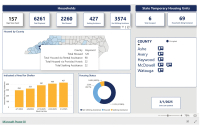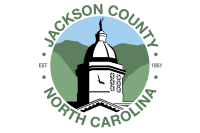Wilderness and recreation areas are good for WNC
 By Brent Martin • Guest Columnist
By Brent Martin • Guest Columnist
Setting aside a modest portion of the Nantahala-Pisgah National Forest as Wilderness and National Recreation Areas (NRAs) would deliver huge benefits for a wide variety of user groups and for our local economy. So it is baffling to witness county after county in western North Carolina passing resolutions opposing the idea.
These anti-wilderness, anti-recreation resolutions, proposed by some hunting groups and passed by county commissioners, push the argument that such land designations will harm game management activities like clearcutting forest land, which creates early successional habitat favored by deer, turkey and grouse for browse and cover.
But this is not an either-or situation. There is enough forest to accommodate a variety of uses. I support game management and believe logging can be done on the national forest in a sustainable way, particularly when it supports ecological restoration. It is also clear that Wilderness and National Recreation Areas are suitable designations for a high-recreation demand forest where the number one uses are hiking, nature viewing, mountain biking, and other forms of recreation.
Wilderness — which does not allow logging, roadbuilding, motorized access, or mountain biking — does allow hunting, as well as horseback riding, camping and fishing. National Recreation Areas are typically open to a wider variety of activities, such as mountain biking, roads, active game management and more. Uses in National Recreation Areas are determined by local communities to reflect their interests. It’s all in the language of the legislation that would ultimately be required. As the name implies, NRAs emphasize recreation over other potential uses, such as resource extraction, energy development or any kind of high-impact activity that would harm the recreational resource.
Both Wilderness and NRAs can only be recommended by the Forest Service, and this happens during a forest planning process such as the one we are currently undergoing for the 1.1 million acre Nantahala-Pisgah National Forest. This process, which is now in its third year here, is a public one, and everyone is invited to participate and voice their opinion on what they feel the future of this forest should be.
Related Items
A coalition of 42 Western North Carolina organizations and businesses support a proposal for 109,000 acres of new Wilderness and for two NRAs that total 151,000 acres for this new forest plan. This coalition includes mountain bike and hiking clubs, watershed and fishing associations, outdoor retailers, conservation organizations, among others. This proposal has been submitted to the Forest Service and is a modest request to protect approximately 25 percent of the more than 1 million acres that make up the Nantahala-Pisgah, the second most visited national forest in America. .
In the years ahead, recreational visits will only continue to grow here. So with forward thinking to conserve and protect a part of this forest as Wilderness and NRAs, we can insure that these visitors and future generations in North Carolina will have high-quality protected places to enjoy far into the future. These designations permanently protect forest land, support local economic development, and help ensure that Western North Carolina will forever be the great place to live that it currently is.
For more information on the proposal mentioned above, visit www.ncmountaintreasures.org. Additional information and a full report on Western North Carolina’s recreational demands and uses can be found at http://www.fs.usda.gov/-Internet/FSE_DOCUMENTS/stelprd3793009.pdf.
(Brent Martin is the Southern Appalachian Regional director for The Wilderness Society in Sylva.)









